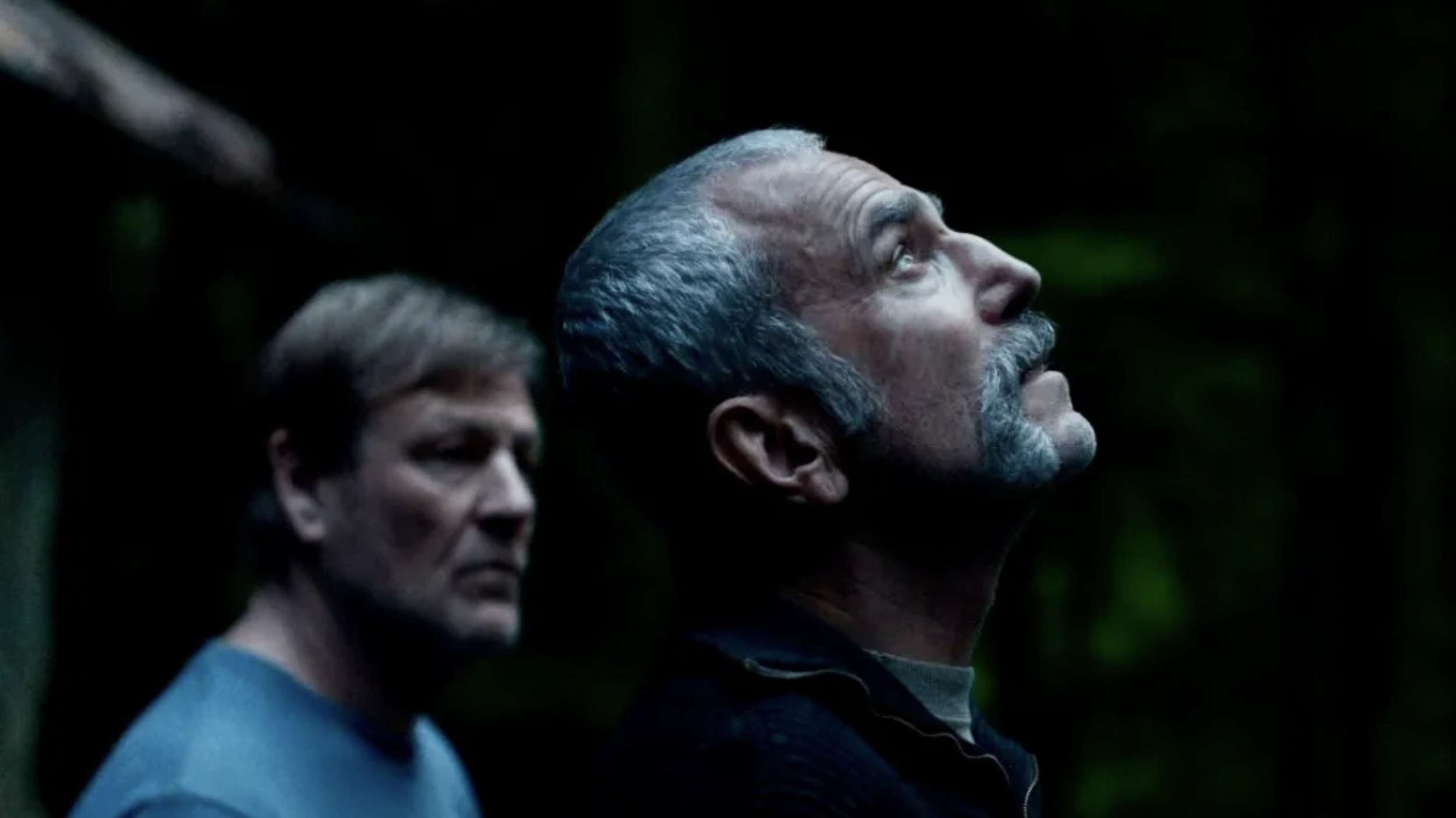ANEMONE
Directing: B-
Acting: B+
Writing: B
Cinematography: A
Editing: C+
If you like gorgeous cinematography above all else, then Anemone might work for you. I tend to give different aspects of filmmaking equal weight, perhaps when I often shouldn’t, and I was quite taken with much of the visuals in this film. Never mind the stunnig shots of stormy skies or the birds-eye shots of verdant forests—cinematographer Ben Fordesman (Love Lies Bleeding) manages even to shoot the head and face of a young woman in a nondescript bedroom beautifully. The thing is with Anemone, it’s the story more than anything that is a challenge to penetrate.
I spent much of the story feeling like director and co-writer Ronan Day-Lewis was being very intentional about how I had no idea exactly what the hell was going on. This was less compelling than it was frustrating, but to the credit of both Ronan and his father Daniel Day-Lewis, who came out of retirement to both co-write and star in his son’s movie, things actually do gel narratively by the end. It just takes a while to get there.
I’m not sure how much of a compliment it is to say about a film that it rewards patience. Patience shouldn’t necessarily be tested in film, depending on the story and the point of view I suppose. Reasonable people could disagree on the matter in this case. The key selling point for Anemone is actually behind the scenes: the heartwarming story of the man widely regarded as the best actor alive, coming out of retirement to help his 27-year-old son make his first feature film. You might be surprised to find Daniel also apparently came out of retirement so he could deliver an extended monologue about taking laxatives so he could deliberately shit all over a pedophile priest.
“Did you believe that?” asks Ray, his character, after finishing telling the tale to his brother, Jim (Sean Bean). This feels kind of like the most pertinent question about the film overall, which spends a lot of time on both visual and narrative abstractions—a couple of pointedly surreal dream sequences, and a lot of caginess regarding these brothers’ past involvement in “The Troubles” in Northern Ireland. After a great deal of time in the film, eventually we learn that Ray is a deeply emotionally scarred man who abandoned his wife, Nessa (Samantha Morton) and their son, Brian (Samuel Bottomley) some twenty years ago and has been living in a cabin so deep in the woods there isn’t even road access ever since. I kept wondering about the inevitability of land development eventually reaching this cabin.
With the exception of a couple of brief scenes in pubs, or of Nessa at her emergency call center job, these four characters are the only ones we ever see in Anemone, which presumably kept production costs down. We get several scenes of Nessa and Brian in their home, coming to terms with how much trouble Brian is in after an antagonistic comment by some other unnamed kid set him off to the point where he beat him nearly to death. We get regular visual reminders of this by close-ups of Brian’s scabbed knuckles. Brian does get a visit by a surprisingly empathetic friend, Hattie (Safia Oakley-Green). Meanwhile, Jim, the brother who was also left behind and helped Nessa raise Brian, has gone off to find Ray in an effort to convince him to come back and help Brian move on from his own pain by providing some answers that have been denied him his whole life.
A lot of stock is put into this idea, and it’s one I was never fully sold on. The return of Brian’s absent father with his own fucked-up past will magically turn things right for Brian’s future? When it comes to suspension of disbelief, the suspension’s strength isn’t holding all that well.
And Anemone is very vague about the connection to The Troubles in these people's past, even with one more Ray monologue about a very specific, very violent incident that was clearly a decisive factor in his becoming a hermit in the woods. Daniel Day-Lewis is very good in this film, but no one could credibly say it comes close to his best performances; he commands attention far more gracefully in what previously had been his last role, Phantom Thread (2017), an objectively superior film on all fronts (except, perhaps, cinematography).
Incidentally, Daniel Day-Lewis is not the only thing Anemone has in common with other Paul Thomas Anderson films. There’s a thrilling sequence of a storm with giant hail stones that very much brought to mind the plague-of-frogs sequence in the 1999 film Magnolia—right down to the sequence of shots depicting each character reacting to the freak occurrence. There are many recognizable influences at play in Ronan Day-Lewis’s film, but that doesn’t preclude his obvious talent either. Much as Daniel Day-Lewis is rightly beloved, I am left more eager to see what Ronan might do next on his own.
Oh, brother!
Overall: B

